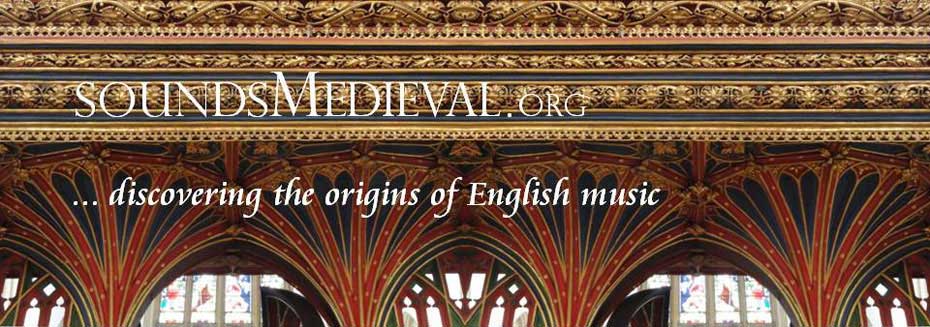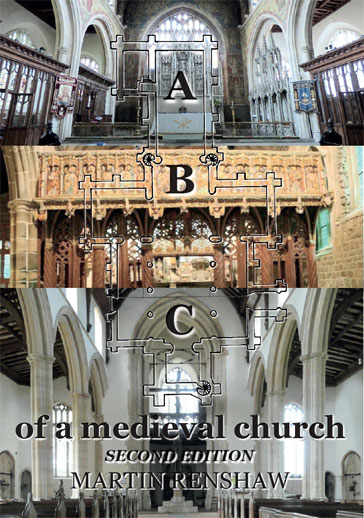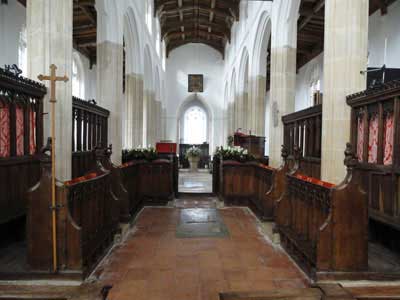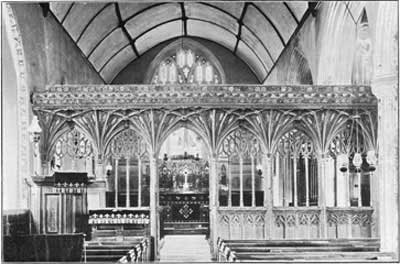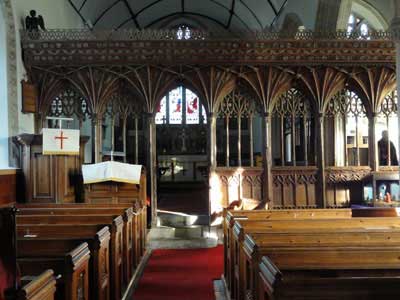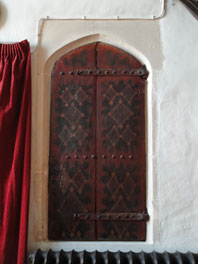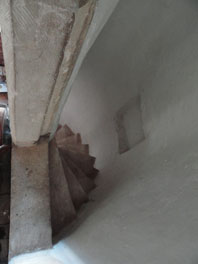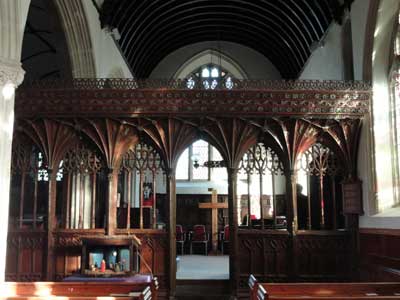|
|
Welcome to SoundsMedieval.orgThis website presents a new approach towards understanding why medieval churches are so compelling. We can all appreciate that they were beautifully built and adorned, but at the same time they were designed with practical purposes in the minds of their creators. What were these? Go eastwards beyond the rood screen or chancel arch and you will find spaces that were conceived to be sung in and to make musical ceremony. Even now, five centuries after most of that music ceased, traces of their living past are still there and can be found. These churches are unique in European culture and they can tell us more than anywhere else about the circumstances in which music was improvised and produced until the early 16th century. The remarkable thing is that this aspect has not been explored before, descriptions of churches being almost always as if they were silent buildings whose architecture is more important than their purpose or function. Investigating the archaeology of the late medieval organWe are looking at these wonderful buildings in order to find answers to questions such as these:
The website makes the first tentative steps towards asking and then perhaps answering these and similar questions. We have been awarded a research grant from the Society of Antiquaries, with funds from a benefaction by Marion Gilchrist Wilson FSA. It is towards expenses for a year (in the first place - we have asked for three years) to visit and survey around 350 churches per year. There are now about 1,000 churches in our sights. You will find in our Library lectures and articles (click here to see), produced from 2011 to 2018, which contain some of the essential background and suggest lines of exploration. The most recent lecture/presentation was given in February 2023. We have also published in the Library in March 2016 an article for the Organ Yearbook (2015) titled "Were there any organs in Medieval England? A mid-term report" and, in February 2018, details on how to obtain a copy of the first book to explain the functional, musical and liturgical reasons for features once found in all medieval churches, 'ABC of a medieval church' (2nd edition, 2019) by Martin Renshaw. Documentary evidenceIt seems that the potential of the many surviving documents of the medieval period has not been fully exploited. This website will contain as much documentation as we can assemble. From thousands of details a whole picture can be built up. They describe in English and Latin the huge community effort that went into making churches resound with music: choir-books, singers, bells and organs of all sizes. There is a list of the churches we have discovered to have known musical connections which is our starting-point for exploring them from 2012 to 2016. The necessary archival support for it will be made available on the website in our Library. On-site evidenceDuring this time we aim to establish the most useful and productive ways of looking for evidence and answering the questions that each building poses. Case studies of churches already visited or about to be seen are now being posted in the Library section of this website, and these will include some of their documentary support. Erasmus said, perhaps in despair, that the English would never be deprived of their high-quality polyphonic church music. Unfortunately they were - until now ... Peter (Fredric) Williams (1937-2016) - a personal memoirPeter (Fredric) Williams, the distinguished harpsichordist and leading authority on the music of Johann Sebastian Bach, passed away on 20th March 2016. Peter was the initiator of the research project published on this website with the simple question he posed in February 2008 "How many organs were there in England in 1500? You can read Martin Renshaw's personal tribute to Peter Williams here: Peter Williams - a personal memoir (doc, opens in new window). |
NEW: The second edition of ABC of a Medieval Church The book for all those Published December 2019 Click on book cover image (or here) for details in our Library Section (under "Books") including how to order your own copy: Some examples of English
|
Contact SoundsMedieval.orgAll enquiries by email if possible please. Email: renshaw.martin45@gmail.com Telephone: +44(0)785-184-8300
Cookies and Privacy Policy The owner and editor of this website respects the privacy of our visitors. The owner and/or editor does not use cookies to collect personal or other data about visitors to this website.
|
|
Website first went live in 2012. Built to W3C website and CSS standards. |
|
